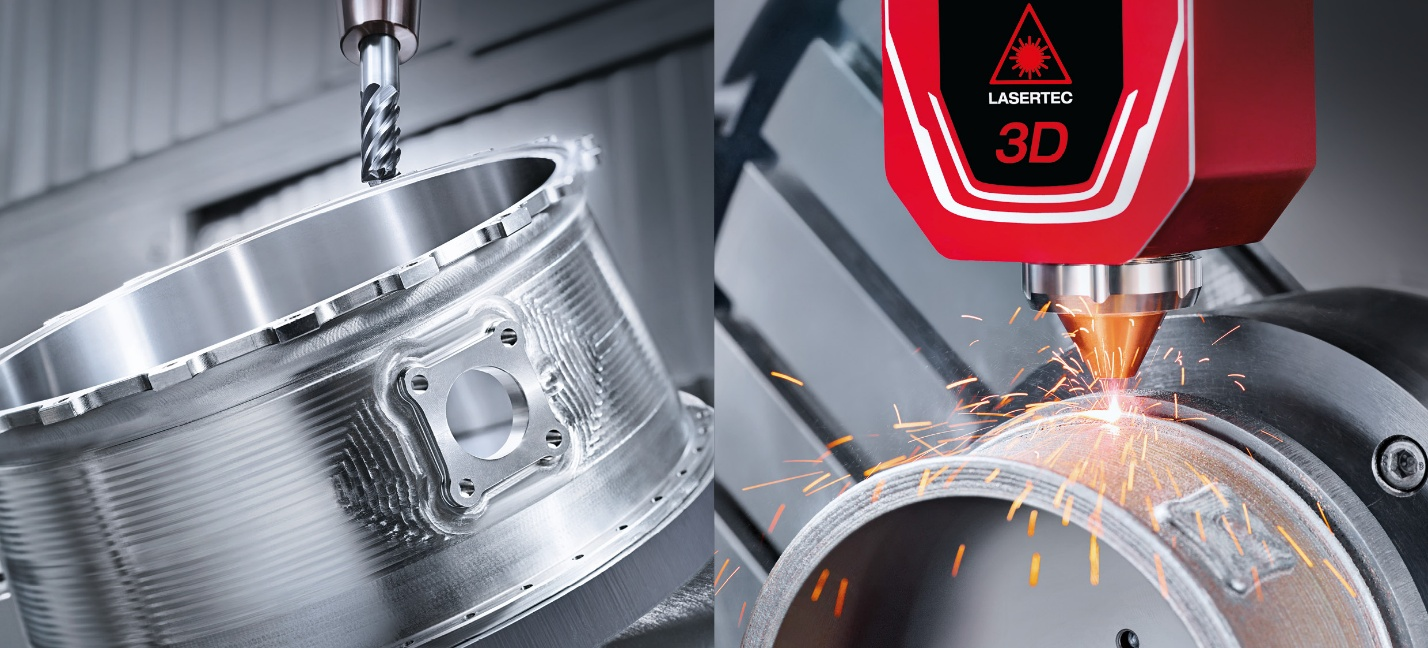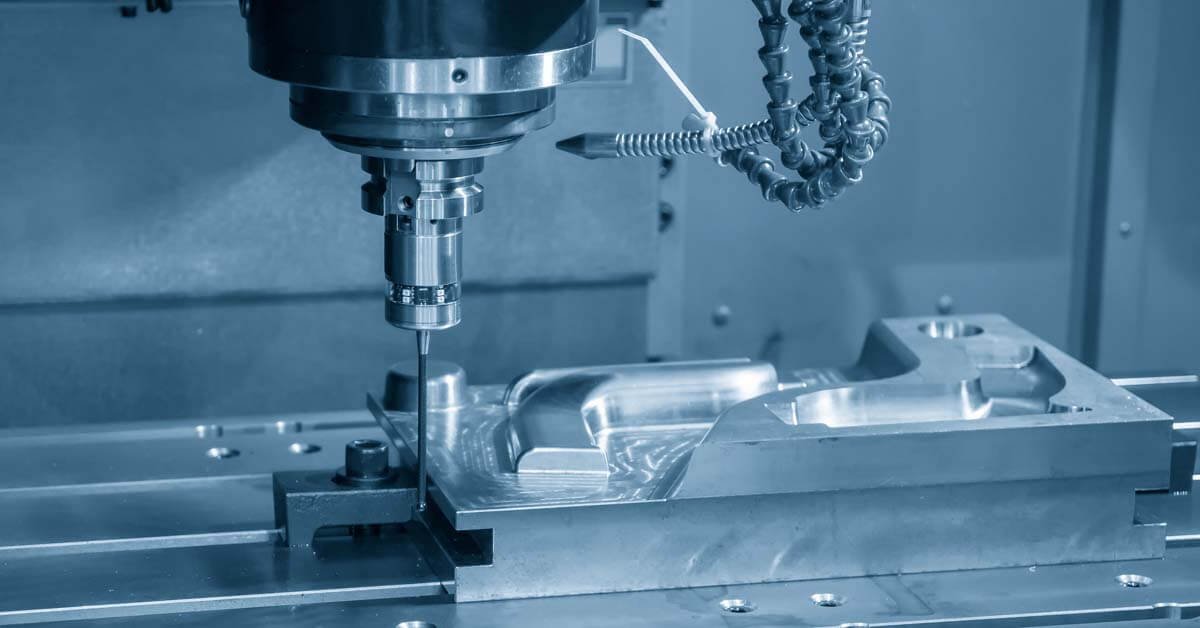1.0 Introduction
A burr is an uneven flying edge on the metal end of a cold cut, hot saw, or flame cut, as well as the extruded extra metal at the weld seam during welding operations. Burrs are formed during Shearing, bending, cutting, piercing, and compressing materials. They are common on cold cut product ends and their thickness is determined by distance between the knife blades.
Deburring is a machining technique that improves the final quality of a product by eliminating raised edges and undesired material bits that are left over from the earlier machining processes. Burrs are removed using mechanical, electrochemical, and thermal processes. Deburring is the most critical step in preparation for machining and obtaining exceptional surface quality at CNC Milling China.
1.1 Importance of Deburring
Regardless of the difficulties and costs, deburring is an important part of the production process because:
- Burrs obstruct proper part fit and assembly.
- Corrosion forms quickly in cracks and burr surfaces.
- Burrs obstruct extra specific machining.
In cases where burrs are not removed before a mechanical reworking or a surface oxidation procedure, a lot of residual material will build on the narrow edge throughout the process, causing defects if coated or welded.
- Burrs have an impact on part longevity, shape, function, and quality.
- Burrs are a threat to both workers and customers.
Burrs, as a sharp edge, are more likely to cause damage to personnel during the transportation and assembly of parts, as well as during product usage and maintenance, increasing the risk of injury while working.
2.0 Types of Burrs
Burrs are classified based on their structure and formation method.
2.1 Shape-based classification
Flying edge burrs, sharp-edged burrs, and splashes are the most common forms of burrs in metal processing.
I. Flying edge
These are usually formed in the mold opening and closing positions, such as the parting surface of the dynamic and static molds and the sliding part of the slider. The flying edge is mostly caused by mold or machine clamping force failure.

II. Sharp burrs
Sharp burrs have sharp edges and resemble broken glass. The lower side of the cutting surface is rough as part of the high-strength attachment.
III. Splash
Splash occurs frequently during the transition of molten metal to molten pool.
2.2 Classification based on method of formation
Burrs are characterized here according to their development mechanism. These are called Poisson, tumbling, tearing, cutting, and hot burr.
I. Poisson Burr:
When compressive stresses are applied to a material, the margins of the region in contact plastically deform and elongate, resulting in burrs. As the cutting tool's tip meets the workpiece, the edges of the cut get distorted owing to compressive and shearing forces. These deformations are also known as entrance burrs, which occur at the cutting tool's entry point.
II. Tumbling burrs
When the cutting tool finishes cutting, some leftover material travels with it and folds together towards the entrance point or the cutting edge. Additionally, as chips or rolls get thicker with depth, the depth of cut can play a role in the creation of flipping burrs. Effective burr prevention requires the use of materials with sufficient ductility to prevent chips from easily detaching from the component.
III. Tear burrs form
When chips are ripped instead than sheared off the workpiece, tear burrs occur. Even though burrs may occur in any cutting process, side-milling procedures are the simplest to manufacture. The chip is propelled up and forward by the milling cutter teeth. The chip's sides are peeled away from the workpiece as a result of this.The ripped bit of the workpiece that remains is called a tear burr. A rip burr is created in punch-press operations. The blanking burr was originally referred to as a tensile burr in early studies.
IV. Cut burr
The remaining material generates a cut-off burr when the cut component separates or falls off from the main section. This burr might be advantageous or detrimental. Cut-off burrs are most commonly found in saw cuts and automated screw machine components. Burrs can be prevented by properly supporting both sides of the incision until it is finished.
V. Hot burrs.
Slags form when molten metal is hardened using techniques such as welding, plasma cutting, or laser cutting. Slags have different mechanical qualities than base metal because of residual stresses induced by heating and uncontrolled cooling. Slags are typically chipped off with a manual power brush, however grinding may be necessary in some cases.
III.0 Types of deburring processes
Depending on the material, component form, burr size and location, product volume, and cost, deburring can be done in a variety of methods. Deburring is done either manually or mechanically. Non-traditional technologies for specialized deburring applications include electrochemical, thermal energy, and cryogenic. The benefits and uses of the various deburring procedures are listed below.
III.1 Manual Deburring
Burrs, sharp edges and unfinished edges are removed from the surface of an item during manual deburring. Deburring manually is a flexible yet time consuming procedure. Moreover, several tools are utilized in manual deburring.

III.2 Mass Finishing
A huge number of pieces are loaded into the deburring equipment and deburred all at once. Machines of various types are employed, and the equipment can normally function as a batch process or as a continuous flow process. Although the actual number of mass-finishing machines in operation is unknown, it is likely to be in the 50,000 range. One of the most extensive groups of edge finishing procedures is mass finishing. These techniques offer the advantage of covering the bulk of exposed surfaces and edges. Because they work on several elements at once, they are frequently the most cost-effective techniques for a variety of components and materials.In addition, the procedures are considered ecologically beneficial because they employ media, compounds, and typically harmless ingredients.
III.3 Brushing
Power-driven brushes are employed in practically every major metal sector. Brushing is quick, cheap, and extremely versatile. It can be a non-contaminating procedure that is typically "environmentally favorable. “It is easily adaptable to manual or automation equipment and requires little operator training or floor space. Brushing is frequently coupled with bonded-abrasive deburring and buffing to provide final product finishes and edges. Brushing machines are available from a variety of manufacturers. Brushing’s rotating motion is a significant benefit since it enables for the use of a wide range of drive motors and fixturing. Brushing's industrial utility is boosted even more by the capacity to vary factors like bristle material, diameter, and length. Brushing is also an easy and safe method.

III.4 Robotic Deburring
This requires mounting a chamfering, grinding, or deburring tool on a robotic arm. Irregularity, sluggish turnover, and labor-intensiveness are the key drawbacks of manual deburring, henceforth robotic deburring eliminates these issues by removing the human aspect. Robots can reliably and quickly perform repeating movements. Operators can design specified motions as well as factors like force and tool speed using CNC programming. Despite the higher upfront cost, robotic deburring is more cost effective in the long run due to lower operational expenses. In addition, robotic technologies are far safer than manual processes.

III.5 Mechanical Deburring
Machines are used to deburr a workpiece. In comparison to manual deburring, the operator has less control over the aggressiveness and localization of the deburring action. The following are some examples of mechanical deburring machines:
i. Barrel Tumbling
In terms of running expenses, barrel tumblers are one of the most cost-effective deburring equipment. Wet and dry barrel tumbling are the two types that exist.This machine not only eliminates burrs but also polishes the part's surfaces. The machine operates by placing a part or many pieces, as well as abrasive material, into a chamber or "barrel. Depending on the material and surface finish, special compounds are also used in barrel tumbling.
ii. Vibratory Deburring
Similar to deburring barrel tumblers, the parts are put into a chamber containing the abrasive medium and different additional compounds.The essential distinction is the movement of the chamber. This sort of machine vibrates to generate motion, whereas tumblers rotate to create agitation inside the chamber. The chamber moves independently of the foundation because of springs or dampers. The contents of the chamber are shaken by an off-center spinning weight linked to it. Tubs, circular bowls, and trough machines are among the many configurations offered. The geometry of the part and its application influence the configuration choice.
iii. Waterjet Deburring
Burrs and debris are eroded off the workpiece using the impact force of high-velocity water jets. Water jets, like tooled robotic systems, are CNC operated. To avoid damaging the component, waterjet deburring employs lower pressures than waterjet cutting.
As a result, it only eliminates burrs that are thin and lightly connected. Larger burrs are difficult to remove without causing damage to the edges. Water jets have the benefit of being able to reach features that are unreachable to conventional deburring technologies. As an advantage, the finished product is free of oils and dirt.
III.6 Electrochemical Deburring
Electrolysis is used in this deburring technique. In places with short interelectrode gaps, electrolysis accelerates. It is, however, prohibited in locations where the electrodes are separated by insulation. The cathodic tool has the same form as the workpiece. This is used to concentrate electrolysis on burr-prone areas. As an anode, the workpiece is connected to the circuit. An electrolyte is added to complete the circuit, transferring charge from the tool to the workpiece. To prevent dissolving other surfaces, portions of the tools are shielded. This technique is ideal for deburring tough-to-machine geometries and conductive materials that are difficult to process. Moreover, no tool wear is present.
III.7 Thermal Deburring
During the procedure, the workpiece is subjected to significant corrosive vapors for a short period of time. A thermal shockwave is created, vaporizing the burr fast. Burrs and raised edges, for example, sublimate because they can't distribute the enormous heat to the surrounding areas. Heat deburring is effective on oxidizable materials with limited thermal conductivity
III.8 Abrasive and Micro-abrasive Blasting
Surface imperfections are removed by hitting the surface with abrasive medium. Abrasive blasting is typically used to remove bigger burrs and generate the desired texture and surface roughness for fluid shearing equipment. Micro-abrasive blasting creates smoother surfaces with more precision without compromising the part's dimensional correctness. To create a regulated abrasive jet that can target and remove microns of material, this procedure employs extremely fine abrasive media such as aluminum oxide, glass beads, and plastic media, as well as a small nozzle. For high-value precision items, micro abrasive blasting is employed.
4.0 Conclusion
Although deburring may appear to be a minor task, it is an essential step in the metal and resin machining process at CNC Milling China. When the significance of deburring is diminished, serious quality and safety concerns arise. Deburring must therefore be precise and prioritised.
Improving the deburring process help a manufacturing facility solve a variety of issues. Deburring, for example, is automated to save time and money while also replicating expert knowledge. Deburring is considered initially during process design and included in CNC Milling China’s training program.







